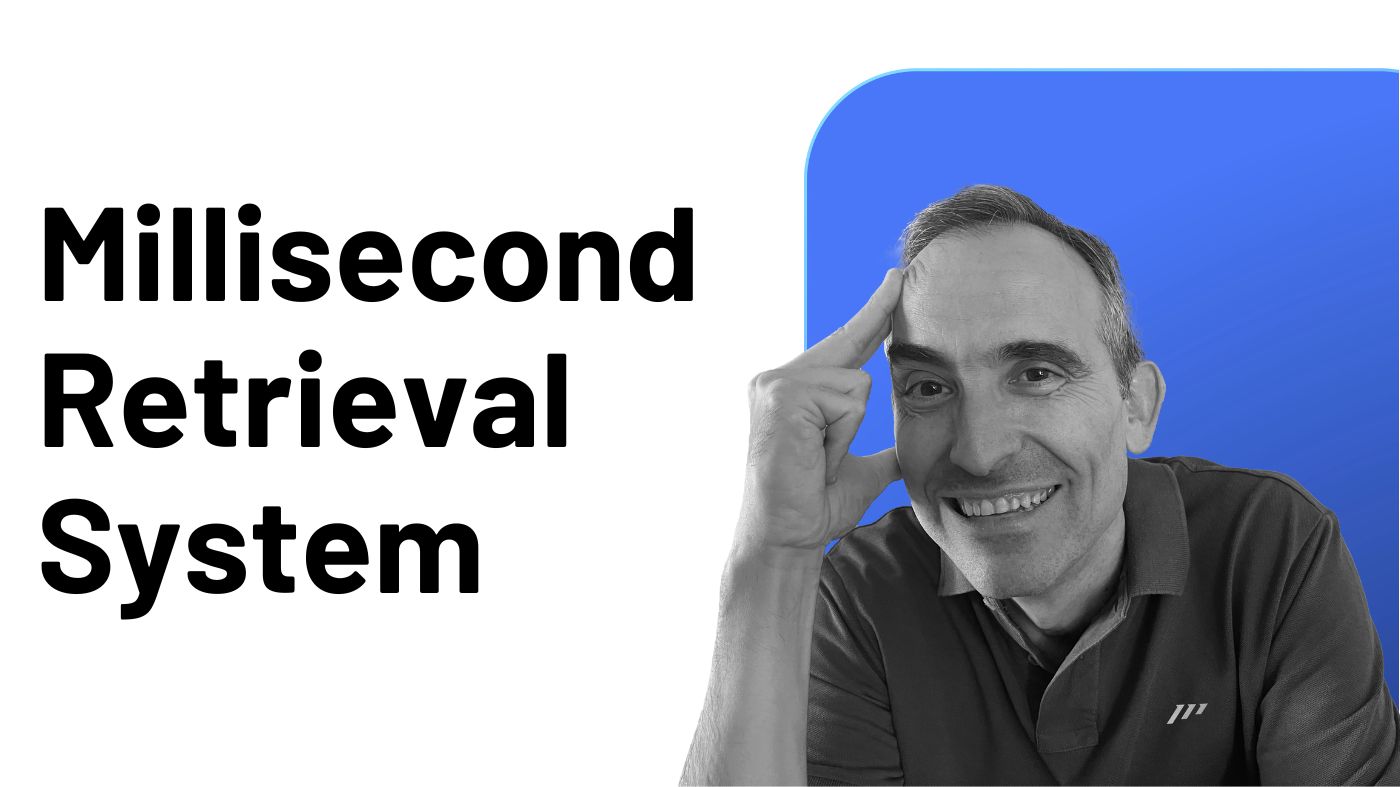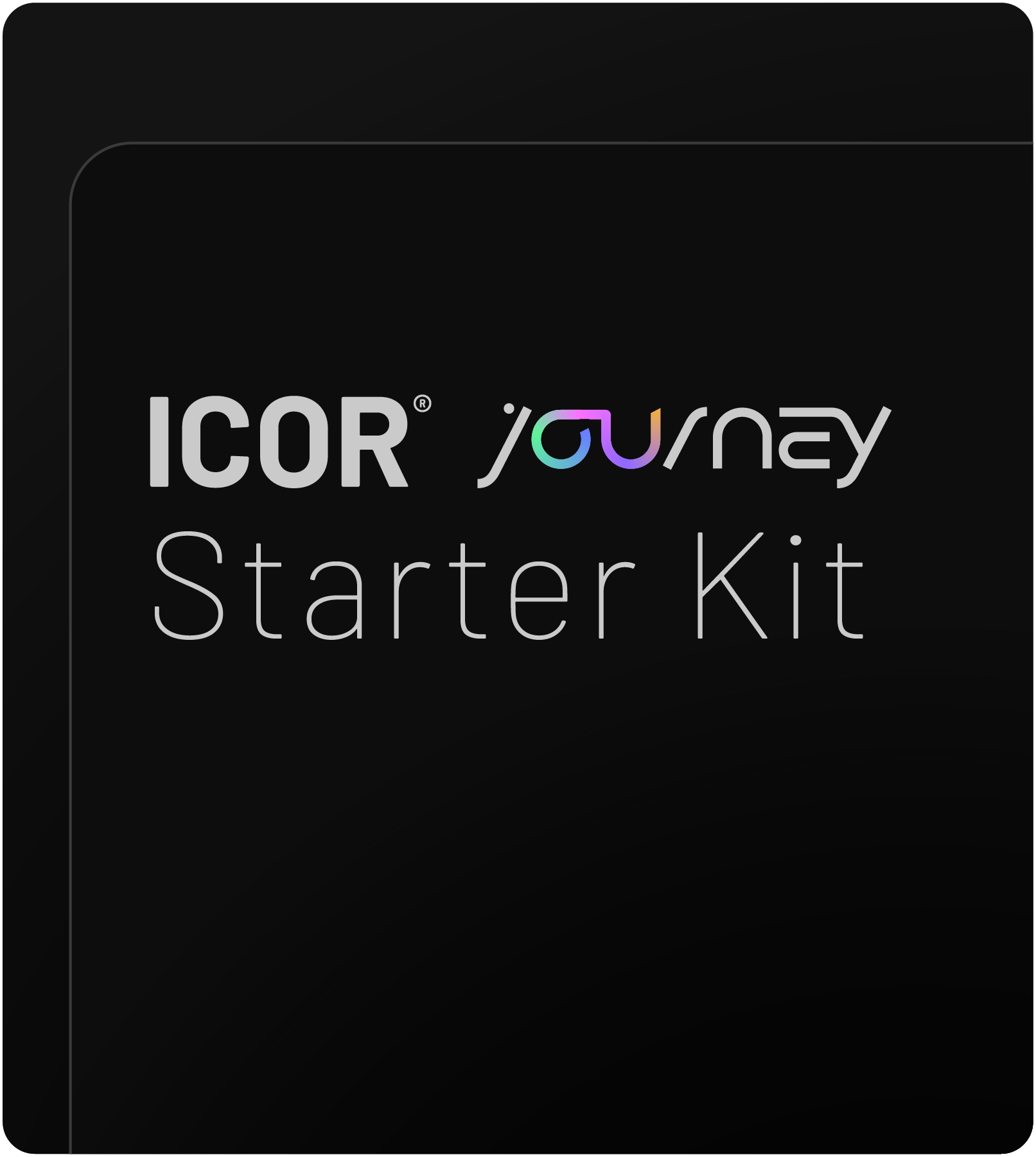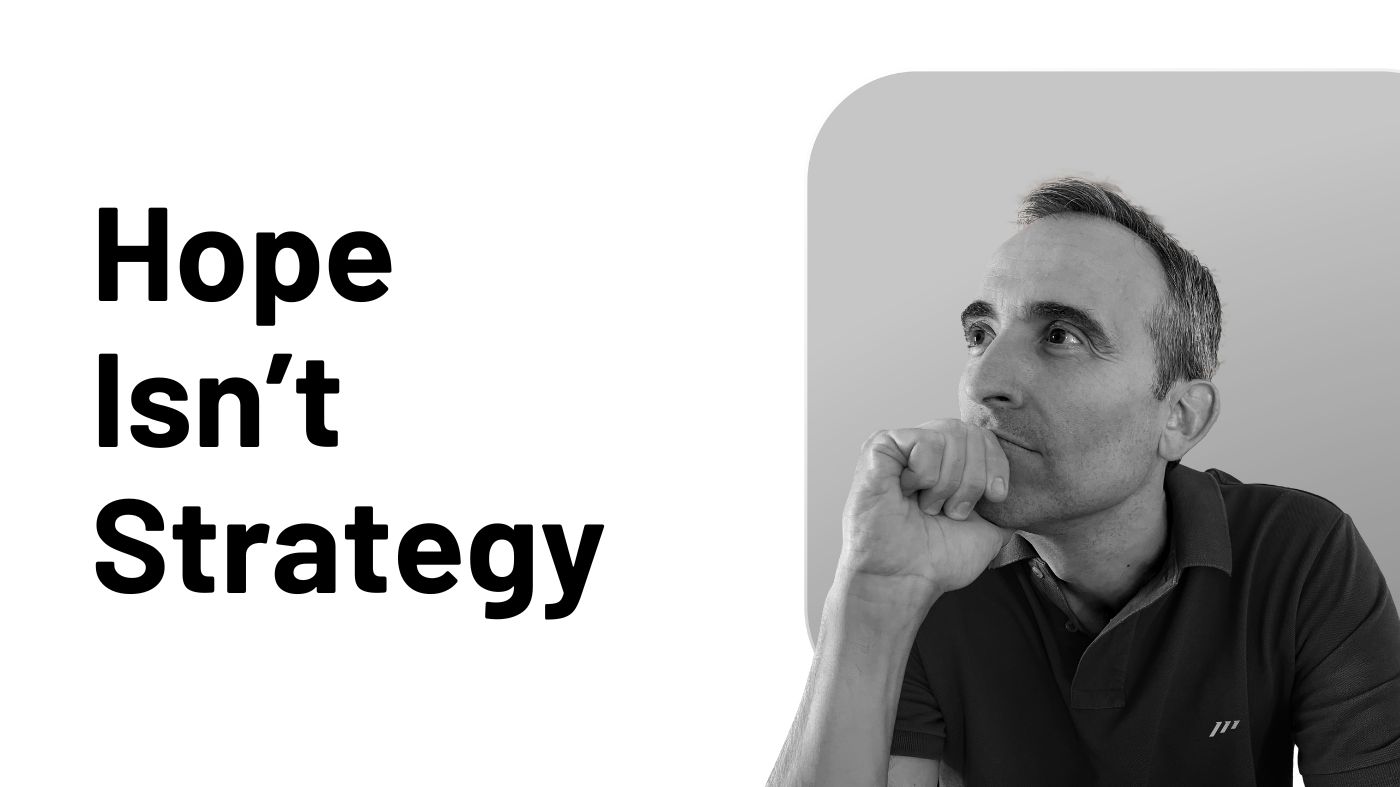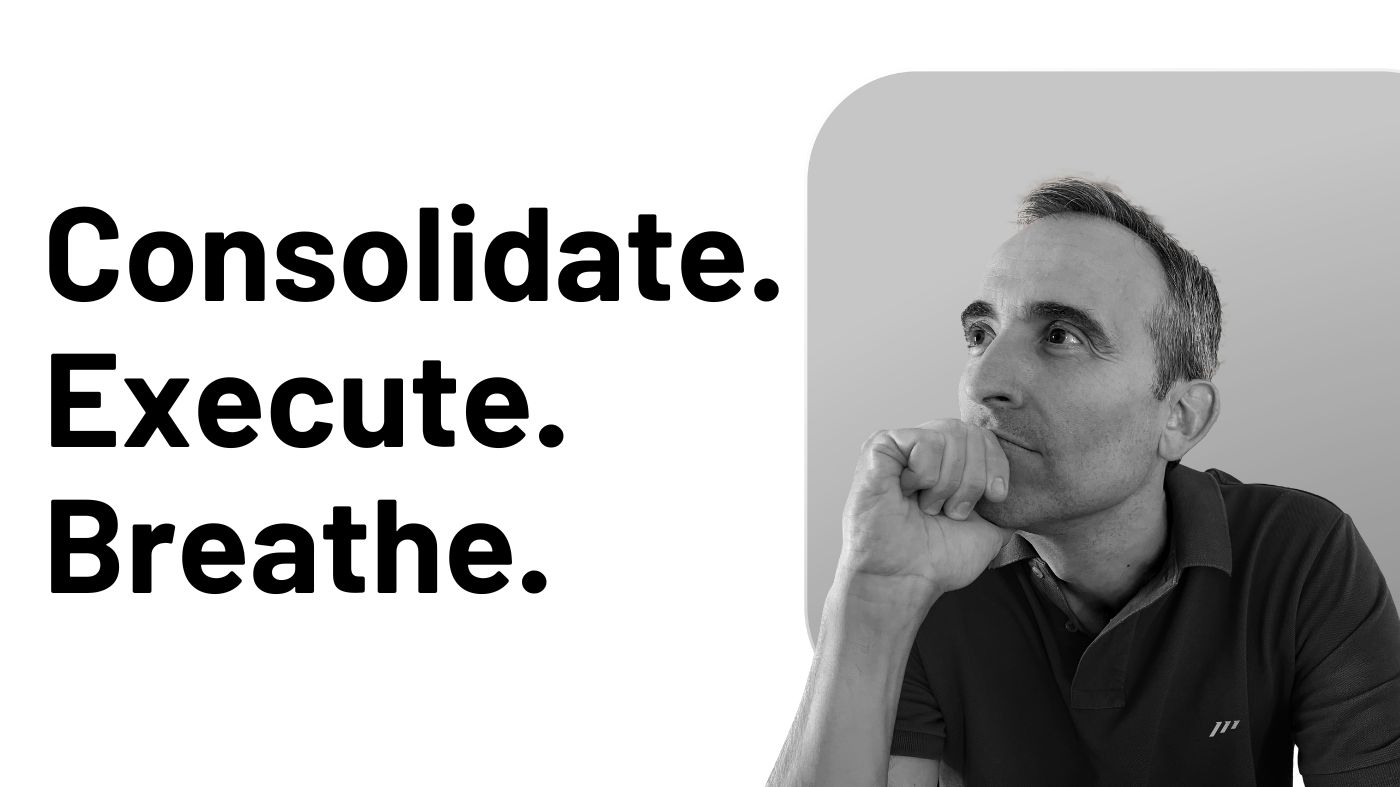The executive spending two hours finding a document and the executive who just recreates it are both losing.
One loses time now, one loses time repeatedly.
Let me break this down.
The first executive knows the document exists.
He saw it last month. It had exactly the information he needs.
But now? It’s buried somewhere in email, a random folder, or a colleague’s drive. Two hours vanish into the search.
The second executive gave up searching.
He decides it’s faster to just recreate the work. So he does.
But next month, when he needs it again, he’ll recreate it again. And again.
Each time, more hours disappear.
Both approaches are broken. And both stem from the same root problem: No system for retrieval.
Here’s what most people don’t realize: information only has value if you can access it when you need it.
It doesn’t matter how brilliant your insights are, how detailed your notes are, or how many documents you’ve created. If you can’t find them in seconds, they might as well not exist.
This is where a productivity system becomes non-negotiable.
The Two-Hour Tax Every Executive Pays (But Doesn’t Track)
Picture yourself at your desk right now.
Your Monday client strategy lives in Evernote, while the latest numbers hide in a Google Sheet.
Critical decisions are buried deep in Slack threads, and your meeting notes are scattered across three different apps like pieces of a puzzle you can’t quite solve.
Now multiply this scenario by every document, insight, and decision you’ve created in the past year.
Welcome to the invisible productivity crisis that’s costing you more than you realize.
Research reveals a staggering reality: busy professionals are losing up to two precious hours every single day just searching for information they’ve already created.
Let that sink in for a moment.
That’s ten hours every week. Forty hours every month. An entire workweek vanishing into the digital void, time that should be driving strategic initiatives, developing your team, or growing your business.
But the true cost goes beyond just lost hours.
It’s the missed opportunities, the delayed decisions, the strategic initiatives that never quite get off the ground because you’re caught in an endless cycle of digital archeology, digging through layers of scattered information.
“It’s not the daily increase but daily decrease. Hack away at the unessential.” – Bruce Lee
Every time you need to retrieve or store information, your brain engages in an exhausting game of digital hide and seek:
-
Should this critical insight go in your task manager or your notes app?
-
Where exactly did you save that market research from last quarter?
-
Is that important decision in your email thread, or was it updated in Slack?
Each of these decisions creates cognitive friction, tiny moments of uncertainty that compound throughout your day.
These aren’t just minor inconveniences. They’re silent productivity killers.
The executive who searches for two hours loses time once.
The executive who recreates the document loses time repeatedly.
But both are symptoms of the same disease: retrieval failure.
When you can’t access information in seconds, you face a binary choice: waste time searching or waste time recreating.
Either way, you lose.
Why Smart People Still Can’t Find Their Own Work
You’re not disorganized.
You’re not lazy.
You’re not “bad with technology.”
You’re fighting against three fundamental forces that make retrieval impossible, no matter how intelligent or disciplined you are.
First, information proliferation has made intuitive retrieval obsolete.
Twenty years ago, a professional might create 10 to 20 documents per week.
Today?
You’re generating that many before lunch.
Emails, meeting notes, strategy documents, client files, internal communications…
The volume is crushing.
Your brain evolved to remember where you left your spear or which tree had the best fruit. It did not evolve to intuitively recall the location of 847 documents spread across 6 different applications with overlapping but inconsistent folder structures.
The myth of “I’ll remember where I put it” dies fast when you’re creating dozens of information artifacts daily across multiple platforms.
Spoiler alert: you won’t remember.
Your brain has better things to do than catalog your digital filing mistakes.
Second, tool proliferation created competing storage systems without integration.
You adopted Notion because it was perfect for documentation.
Then Slack for team communication.
Then Google Drive for file sharing.
Then Evernote for personal notes.
Each tool promised to be “the one place for everything.”
Instead, you now have five “one places for everything,” and information gets stored wherever was most convenient in that specific moment. Next month, when you need it again, you can’t remember which “one place” you chose.
The result?
You’re not just searching one system. You’re searching five, each with different search interfaces, different organizational logic, and different access patterns.
Third, cognitive load makes storage decisions exhausting.
Every single time you create or receive information, your brain must decide:
-
Where does this belong?
-
Which tool?
-
Which folder?
-
Which format?
-
Should I duplicate it for safety?
These micro decisions seem trivial individually. But make 100 of them per day, and they drain your mental bandwidth significantly.
This is decision fatigue in action, eating away at the energy you need for actual strategic thinking.
“A place for everything, and everything in its place.” – Samuel Smiles
Here’s the uncomfortable truth I’ve learned from decades of productivity consulting.
Without a clear system for retrieval, you’re not just disorganized. You’re actively draining your most valuable resource, your mental bandwidth, on tasks that should be automatic.
The answer isn’t better search functions. It isn’t more powerful tools.
It’s eliminating the need to search in the first place.
The Single Source of Truth Principle That Changes Everything
Most professionals think they need better organizational skills. They don’t.
They need to make one fundamental decision: Where does each type of information live?
Not “where could it live” or “where might it live.”
Where does it always, without exception, definitively live.
This is the Single Source of Truth (SSOT) principle, and it’s the difference between executives who find information in seconds and executives who waste hours in digital archeology.
A SSOT isn’t just a storage location. It’s a definitive reference point for both storing and retrieving specific types of information.
It’s the exact place, within your productivity system, where something always lives and can be instantly retrieved.
When implemented correctly, SSOT transforms your digital world from chaos into clarity:
-
Your meeting notes always have one home, not scattered across three apps.
-
Client documents live in one dedicated place, not duplicated “just in case”.
-
Project plans exist in one source, not versioned across email threads.
-
Team communications flow through one clear channel, not fragmented across platforms.
The power lies in the word “always.”
You make the storage decision once, at the system level, then never waste mental energy on it again.
Consider these practical examples of SSOT in action:
-
Conversation threads in Slack become the SSOT for project discussions. Every decision, every update, every piece of context lives in that thread. Team members know exactly where to look for project history without asking “which channel was that in?”
-
Custom dashboard views in your project management system become the SSOT for weekly priorities. Instead of hunting through multiple lists, your team sees exactly what matters this week in one dedicated view.
-
Detailed task entries with complete context become the SSOT for individual commitments. Everything needed to execute that task lives within the task itself, regardless of which tool houses it.
-
Standard Operating Procedures (SOPs) serve as the SSOT for processes. When someone asks “how do we handle client onboarding?” there’s one document with the definitive answer, not five different versions with conflicting information.
Here’s what makes SSOT revolutionary: location certainty eliminates search.
When you know with absolute certainty where information lives, you don’t search for it. You retrieve it.
The difference might seem semantic, but it’s transformational.
Searching implies uncertainty, multiple attempts, wasted time.
Retrieval implies knowing, accessing, moving forward.
The compound effect of findable information becomes your secret advantage.
Every piece of work you’ve done in the past becomes instantly available to leverage today.
Your knowledge compounds instead of evaporating:
-
Last quarter’s client analysis informs this quarter’s strategy.
-
Last year’s successful project template accelerates this year’s execution.
-
Yesterday’s insight connects with today’s challenge.
-
Your past work multiplies your future capabilities, but only when you can access it instantly.
“Simplicity is the ultimate sophistication.” – Leonardo da Vinci
Most professionals believe SSOT means “putting everything in one tool.” It doesn’t.
That’s the trap that leads to bloated, unusable productivity systems that collapse under their own complexity.
SSOT means defining exactly where each type of information lives, which might span multiple tools.
The key is crystal clear designation, not forced consolidation.
You can use multiple tools effectively when each serves a clearly defined purpose within your overall productivity system.
The magic isn’t in the tool. It’s in the systematic designation of what belongs where.
Building Your Millisecond Retrieval System
Creating a retrieval productivity system that works in milliseconds, not hours, requires three non-negotiable foundations.
Without these three elements in place, you’re building on sand.
With them, you create an information architecture that serves you for decades.
Foundation 1: Establish Your SSOT Boundaries
The first foundation is defining exactly where each type of information lives in your productivity system.
This isn’t about choosing the “perfect” tool. It’s about making definitive decisions about information storage that eliminate future uncertainty.
Start by mapping your information types. For example:
-
Meeting notes and discussion records.
-
Client files and project documentation.
-
Strategic plans and business analysis.
-
Team communications and decisions.
-
Personal insights and learning materials.
-
Task details and execution context.
For each category, ask one question: Where does this always live?
Not “where should it live” or “where could it live.”
Where does it always, definitively, without exception live?
Your answer becomes law:
-
Meeting notes always live in Notion.
-
Client files always live in Google Drive with this specific folder structure.
-
Team decisions always live in documented Slack threads, then get transferred to the project management system with links back to the original source.
The specific tools matter less than the definitive designation.
Once you decide, you commit.
No exceptions, no “I’ll just put it here this one time,” no flexibility that reintroduces chaos.
Foundation 2: Separate Information from Action
The second foundation addresses one of the most common retrieval failures: mixing reference information with actionable commitments.
These are fundamentally different types of data that require completely different handling:
-
Reference information needs good search and organization. Things like market research, client histories, strategic documents. You need to find these when relevant, but they don’t drive daily execution.
-
Action information needs visibility and triggers. Things like tasks, projects, deadlines, commitments. These must surface at the right time to drive execution forward.
When you mix them without any strategy in one productivity system, both suffer.
Your reference library gets cluttered with outdated tasks.
Your action system gets buried under reference materials you don’t need today.
The ICOR® methodology separates these cleanly into distinct areas, visually represented in the ICOR® Framework:
-
PKM (Personal Knowledge Management) for your individual information and insights. This is your private knowledge vault where reference materials live and evolve.
-
BKM (Business Knowledge Management) for team information and shared documentation. This is your organization’s collective intelligence, accessible to everyone who needs it.
-
PPM (Personal Project Management, also known as Task Management) for your individual tasks and commitments. This is your private command post for daily execution.
-
BPM (Business Project Management) for collaborative projects and team workflows. This is your team’s mission control center for shared execution.
By clearly separating information from action, and individual from collaborative, you eliminate the confusion that makes retrieval slow and storage uncertain.
Foundation 3: Implement Systematic Capture Protocols
The third foundation ensures information actually makes it into your productivity system correctly from the start.
The most sophisticated retrieval system fails if information never enters it properly or consistently.
This is where intermediate tools become strategic.
Based on the ICOR® methodology, an intermediate tool is a temporary capture point you use when your primary SSOT isn’t immediately accessible.
For example, you’re in a meeting and need to quickly capture an insight.
Your full note-taking system might be too slow to access in that moment. So you capture it in a fast, mobile-friendly tool like Apple Notes.
Later, during your daily processing time (what we call daily routine in ICOR®), you transfer that insight to its proper SSOT, adding context, connections, and organization that make future retrieval instant.
The key is systematic transfer, not permanent intermediate storage.
Your intermediate tool is a temporary holding area, not a final destination.
Regular processing sessions move everything from intermediate capture to definitive storage.
With these three foundations in place, your retrieval system transforms from theoretical to operational.
You’ve built the infrastructure that makes millisecond retrieval possible, not occasionally but consistently.
When Tools Actually Matter (And When They Don’t)
Here’s the truth most productivity experts won’t tell you: Tools matter far less than you think.
But when they do matter, they matter enormously.
The productivity tool industry runs on a seductive lie: that the right tool will solve your organizational problems.
It won’t.
I’ve seen executives switch from Evernote to Notion to Obsidian to Roam, chasing the perfect solution. It’s productivity whack-a-mole, except you’re the mole and you keep paying subscription fees.
Each time, they bring their broken productivity system with them, wrapped in a prettier interface.
The tool doesn’t create the productivity system. The productivity system determines the tool.
Your productivity system must come first. Always.
A well-designed productivity system defines exactly where information lives, how it flows, when it surfaces, and who can access it.
These are conceptual decisions about information architecture, not software features.
Once you’ve built the conceptual productivity system, then and only then do tools become relevant.
At that point, you’re not asking “what’s the best tool?”
You’re asking “which tool best implements my productivity system for this specific function?”
This changes everything.
Instead of being seduced by feature lists and marketing promises, you’re evaluating tools against clear, specific requirements that emerge from your productivity system design.
For example, your productivity system might require a note-taking tool that supports fast mobile capture, hierarchical organization, powerful search, and easy linking between notes.
Now you can evaluate tools objectively against these requirements, rather than chasing whatever productivity influencer is hyping this month.
“A new idea is a combination of old elements.” – James Webb Young
But here’s where tools start mattering: amplification.
A good productivity system with poor tools is functional but limited.
The same productivity system with excellent tools becomes powerful, efficient, and scalable.
The right tools amplify a good productivity system by:
-
Reducing friction in capture and retrieval. The faster you can get information into and out of your productivity system, the more consistently you’ll use it. Milliseconds matter. Tools that require three clicks instead of one, five fields instead of two, or manual syncing instead of automatic integration slowly erode system compliance.
-
Automating repetitive workflows. Your productivity system might require daily reviews of project status. A good tool automates this by collecting relevant information, formatting it consistently, and surfacing it at the right time. You focus on analysis, not data gathering.
-
Enabling powerful connections between information. Your productivity system might emphasize linking related insights across projects. A great tool makes these connections visible, suggesting relationships you might not have noticed, creating compound value from your knowledge base.
-
Scaling with complexity. As your business grows, so does information volume. Tools that work beautifully for 100 notes might collapse at 10,000. The right tools maintain performance and usability at scale.
This is the transition from good to excellent.
Your productivity system provides the foundation. Your tools provide the leverage.
I’ve worked with executives who built solid productivity systems using basic tools: simple text files, spreadsheets, and email folders. These systems worked.
Information had clear homes. Retrieval was reliable. But everything required manual effort.
The same executives, after upgrading to tools specifically chosen to amplify their existing productivity system design, experienced dramatic improvements.
Not because the system changed but because the tools multiplied its effectiveness.
The key insight: Tools can’t fix a broken system, but they can transform a good one.
If your productivity system is unclear about where information lives, no tool will help. You’ll just have expensive chaos instead of cheap chaos.
But when your productivity system is clear, definitive, and well-designed, the right tools become force multipliers that turn good productivity into exceptional performance.
This is why the ICOR® methodology emphasizes system design first, tool selection second.
Your tools will change. Gmail becomes Superhuman. Evernote becomes Notion. Notion becomes Obsidian. The tool landscape shifts constantly, and you can’t build your productivity foundation on shifting sand.
But your productivity system, your conceptual approach to information management, can remain stable for decades. It’s based on how humans think and work, not on what’s currently trending in the productivity space.
Build the productivity system first. Let the productivity system dictate the tools.
Then upgrade tools strategically when better options emerge, knowing your underlying productivity system remains intact.
The Multiplier Effect: What Happens When Retrieval Becomes Automatic
The transformation from slow retrieval to instant access doesn’t just save time. It fundamentally changes how you work, think, and lead.
I’ve watched this transformation unfold thousands of times with executives who implement systematic retrieval.
The change follows a predictable pattern, accelerating from immediate benefits to long-term competitive advantages.
In the first week, you notice the time savings.
Those two hours per day that vanished into searching? They’re back.
You redirect them toward strategic work, team development, or simply leaving the office earlier. The immediate relief is palpable.
You might even remember what having free mental bandwidth feels like. It’s nice, isn’t it?
But time is just the beginning. The real power emerges in the weeks that follow.
Decisions become faster with complete information at hand.
When you can instantly access last quarter’s analysis, yesterday’s client conversation, and this morning’s market data, decision-making transforms.
You’re not operating on partial information or faulty memory.
You have the complete picture, instantly available.
This speed compounds:
-
Faster decisions mean faster execution.
-
Faster execution means faster learning.
-
Faster learning means better future decisions.
The cycle accelerates your entire operation.
“Productivity is being able to do things that you were never able to do before.” – Franz Kafka
Quality improves because you stop reinventing the wheel.
Remember the executive who recreates documents instead of searching?
That behavior disappears when retrieval becomes automatic.
Why recreate what you can find in seconds?
More importantly, you build on past work instead of starting from scratch:
-
Last quarter’s client proposal becomes this quarter’s template.
-
Last year’s successful strategy becomes this year’s foundation.
Your work compounds, each piece building on everything that came before.
This compound effect is where ordinary professionals become exceptional.
Your tenth project benefits from lessons learned in the first nine.
Your hundredth client benefits from insights gathered from the previous ninety-nine.
Strategic thinking becomes possible again.
When your brain isn’t exhausted from constant information retrieval and storage decisions, it can focus on what actually matters: pattern recognition, strategic planning, creative problem solving.
-
You start noticing connections across projects.
-
You identify trends before competitors.
-
You see opportunities others miss, not because you’re smarter but because your cognitive bandwidth isn’t consumed by digital housekeeping.
Team performance multiplies.
The benefits don’t stop with you.
When your entire team operates with instant retrieval, collaboration transforms:
-
New team members onboard faster because every process, decision, and historical context is instantly accessible.
-
Handoffs become seamless because all project context lives in definitive locations.
-
Remote work actually works because information accessibility doesn’t depend on physical proximity.
Most powerfully, your team stops interrupting each other with “where did we put that?” questions.
Those interruptions, individually small but cumulatively massive, disappear.
Deep Work becomes possible again.
The executive advantage nobody talks about.
Here’s the competitive advantage that emerges when retrieval becomes automatic.
You can operate at a different cognitive level than competitors still fighting information chaos:
-
While they’re spending two hours searching for last quarter’s analysis, you’ve already completed this quarter’s strategy.
-
While they’re recreating client proposals from memory, you’re building on refined templates that improve with each iteration.
-
While they’re managing information crisis by crisis, you’re thinking three steps ahead.
This isn’t about working harder. It’s about removing the friction that prevents exceptional work.
The executives who master systematic retrieval don’t appear superhuman because they work longer hours or have better memories. They appear superhuman because they’ve eliminated the invisible taxes that drain everyone else’s productivity.
Their secret isn’t complexity. It’s clarity.
Crystal clear productivity systems for where information lives, how it’s accessed, and when it surfaces.
When retrieval becomes automatic, information transforms from your biggest liability into your strongest asset.
Every insight, every document, every piece of knowledge you’ve ever created becomes instantly available to leverage for future success.
Your past work multiplies your future capabilities. That’s the multiplier effect in action.
And that’s the competitive advantage of a properly designed productivity system.
The choice is simple but not easy
You can continue losing hours to information retrieval, watching opportunities slip away while you dig through digital chaos.
Or you can build the productivity system that makes retrieval automatic, information findable, and past work perpetually valuable.
The executives winning in today’s information-dense environment aren’t working harder. They’re working with better productivity systems.
Productivity systems where:
-
Every piece of information has exactly one home.
-
Retrieval happens in milliseconds, not hours.
-
Past work compounds into future advantage.
Stop accepting search as part of your workflow. Stop recreating what already exists.
Build the productivity system that makes retrieval automatic.
That’s how you stop losing.





